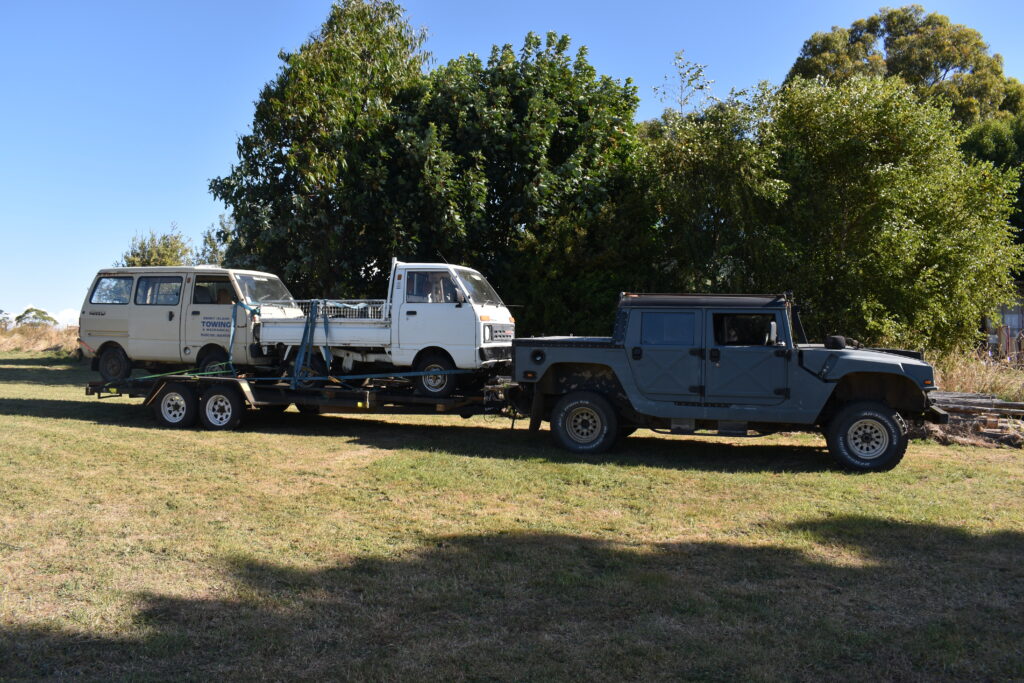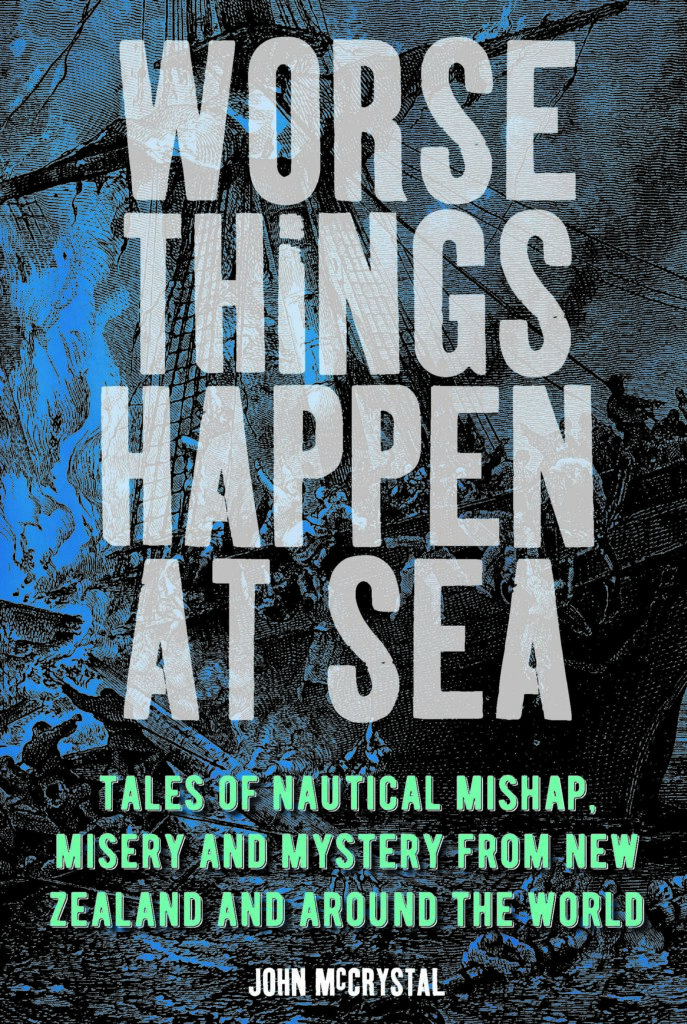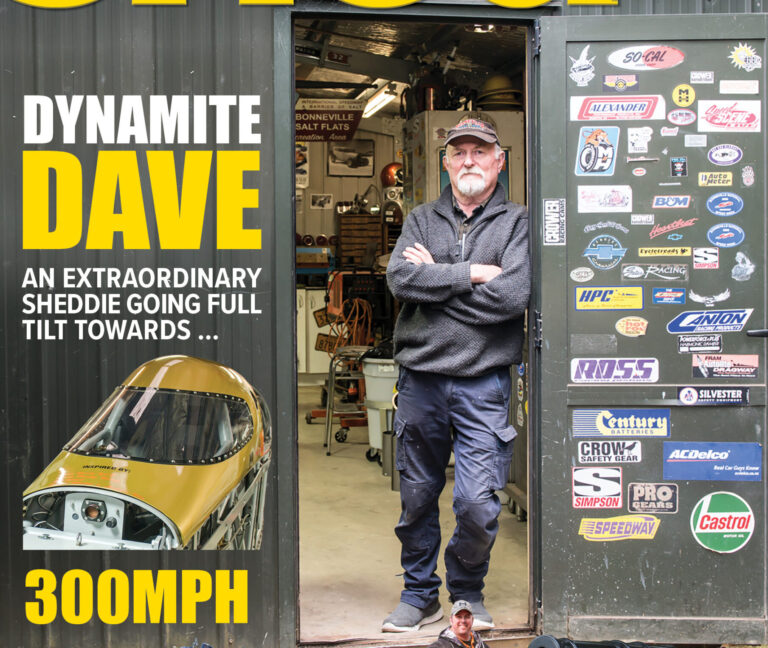Passion meets purpose
When life deals you lemons, make lemonade: a business collapse led John to build a new, bigger business based on his passion for motorcycles
“I really want an old dairy factory”– that’s what John thought when contemplating the move from Katikati to Taranaki a few years ago.
He sat down after his divorce and thought: “What do I need for the rest of my life?
“Well, I need a shed, a bed in the corner, and a place to stuff around with my motorbikes.”
John’s search took him all over the North Island; he was looking for something that was cheap enough. It didn’t have to be flash, as he wanted a few bob to help his kids to get on the property ladder as well as to be able to follow his passion for building and customising motorbikes – something that he had been doing for a long time.
An old garage in Patea came into the picture but, although it met all the criteria, it became too complicated to purchase. Then an acquaintance told him of a house he had for sale in a small town a little further up the coast. In the end, that turned out to be the perfect location.”

Art viewed through a tram window
A sheddie uses Matariki as a great excuse to travel on an historic Christchurch tram.
“Along the way, the driver would stop the tram at the various light works and a guide would give some information about the display and the artist.
The tram was nearly full, mostly with families with young children.
The tram was a 102-year-old Christchurch Tramway Board tram built in 1922 and laid up in 1953. It was restored and put into service at Ferrymead Historic Park in 1970. It is powered by 600-volt direct current; the solid-state rectifiers that modify the current are located in the basement of the council offices.”

Building an acoustic guitar: Part 3
Frets, fingerboard, and finishing
“The head is thicknessed to suit the tuners being used.
Generally this will fall in the range of 12–14mm thick so that the threads on the tuner posts will engage from both sides. Remove material from the back of the head using a vertical fence set-up on a bobbin sander. This also cleans up the back of the scarf joint on the neck.
Make a template out of thin card for the head shape, with its baseline at the back of the nut, and mark on it the tuner positions. If the head shape is symmetrical, it is a good idea to make a half-template, which can be rotated about the centreline. Use the template on the back of the head to draw the shape, and bandsaw and plane/sand it to its final shape.
Use a bradawl to mark the centres of the tuner holes, and use a brad point bit of appropriate size for the tuners being used (normally 10mm). Use a drill press and support the other side of the head to avoid tear-out when the bit breaks through.”

Job done – what next?
Max and his father have put the final touches to Max’s shed, paving the way for some exciting new projects
”For those who haven’t read our previous articles, here’s a bit of background on the shed-building project my dad and I started in mid-September last year.
First, let me introduce myself. I’m Max, an adult with Down Syndrome. I like to keep busy using my building skills, so, with Dad as my teacher, I have designed a planter box. Every box is prefabricated by Dad as a kit for me to assemble. Two years ago, we moved house and our new place had no shed for our projects and my planter box work. The garage is strictly for storing my sister’s stuff, not to mention Dad’s car. As project people, we needed to solve the problem. Dad got some quotes to have a shed built to his specs but they were all way over our budget, so, with a lot of help, encouragement, and heckling from me, Dad and I built a shed!”

Future-proofing MDF cupboards
Particle board and MDF: inexpensive and a popular choice for storage cupboards – but what happens when they come face to face with moisture!
“This is a story about those cheap as chips white melamine storage cupboards that are available from both of the large-format hardware suppliers in New Zealand.
There is no doubt that they are an economical way to create space for all those things that will come in handy one day. My garage is full of them – white cupboards and handy things! However, water is the arch enemy of the particle board that these cabinets are made from, and that is exactly what found its way into my garage. The cupboards nearest the garage opening lapped up this water as if they lived in the desert and it had just rained for the first time in five years.
“No problem,” I thought. “They don’t appear to be falling down, and I’m not too worried about how they look – after all, it’s just the garage.”

Mitre 10: 1974–2024: The first 50 years (Part 2)
Dedication to staff well-being, commitment to the local community, and support for community projects are key elements of Mitre 10’s philosophy.
“In the previous article, we looked at the origins of Mitre 10, a New Zealand co-operative with its roots in both a Melbourne tavern in 1959 and the depths of 19th century Aotearoa New Zealand.
We tracked it through the social, political, and technological turmoil of its 50 years, as it expanded in both what products and services it could offer and the locations where it would be found. The initial 8 stores have become 84, with the 42 Hammer Hardware stores in some of the smaller regions and a fully functioning online store adding to the mix. As far as innovation and resilience go – particularly in such a highly competitive and ever-evolving market – Mitre 10 has set the standard, not only in terms of its customer and community activities but also in conjunction with its business and corporate peers. In this article we will look at the extent and the significance of that involvement and its impact on the turbulent world of retail.”

Arduino basics – Coding for beginners – learning the lingo, where to start, and what to buy.
Keen to dip your toes into the mysterious world of coding but bamboozled by the volume of information on the internet? This series is for you.
“Back in issue 44, August/September 2012, The Shed magazine began a series of articles on Arduino, with an introduction to coding.
Feedback since then suggests that these articles were very useful, and introduced readers to a whole new field. Those back issues are no longer available; however, the articles have been added to The Shed website https://the-shed.nz/2018-5-2-arduino-101-getting-started/
This new series of articles is intended to enhance that series, and cover some other aspects that hopefully will be useful to readers and anyone wanting to dip their toes.
Why bother when the internet is there? That is a reasonable and valid question. The simple answer is that there is too much information. While some examples are well written and well explained, a large number aren’t – or, worse, cause confusion and frustration.
If it’s any help: when I’m being lazy and seeking a shortcut from the internet, instead of sitting down and writing the code, I end up getting confused and frustrated – so you’re not alone.”

Ara’s DIY motor-body restoration class
Tucked within the four avenues that enclose the core of Christchurch is a facility where enthusiasts frequently spend many years learning and perfecting their craft, giving the lie to the claim that the last car to be restored in NZ has already been restored
“For more than 20 years, panel-beating teacher Craig Erickson has run a Saturday class at Ara Institute of Canterbury (formerly a polytechnic) for folk wanting to learn how to repair classic car bodies.
The not-inexpensive course is split into three 16-week modules of 60 hours each: entry-level panel beating, steel panel fabrication (both run on Saturday mornings), and aluminium panel fabrication (run on Saturday afternoons).
In practice, the third module has the students working on their own projects and can be repeated indefinitely, until either the project is completed or the student gets too old to swing a hammer.
The classes attract men and women with a range of ages, occupations, and some considerable variety of place of residence; some pupils drive up from Oamaru and Timaru; another pupil flies down from Auckland for the afternoon sessions.”

The Shed shrink: A timely reminder
Motorcyclists are known for their willingness to raise money for worthy causes, and DGR is one that is close to home for many.
“Support for charities is in motorcyclists’ DNA, and the Distinguished Gentleman’s Ride (DGR) is widely known amongst the motorcycle fraternity. Participants ride with a poignant message: we need to do more for men’s well-being and reduce the number of prostate cancer deaths with education, awareness, and research.
I have a personal reason to support this worthy cause: a recent diagnosis of prostate cancer, which left me feeling my world had turned upside down.”

Building microlight aircraft: The plane-makers – Part 2
Kiwis have always been great DIYers – but what about building a plane in your shed, then having enough faith in your handiwork to risk your life flying it?
“In the previous issue of The Shed 115, I began my exploration of the world of home-built microlights, quickly discovering that my preconception of glorified kites with modified lawn mower engines was way out of date. Modern microlights may be the Dreamliner’s baby brother but they are all aeroplane.
My next stop was to visit Chris Wade, in Cockle Bay, Auckland. I knew he was working on a crashed microlight so I spent some time looking through the Civil Aviation Authority (CAA) record of fatal air crashes for the past decade and noticed a conspicuous increase in the number of microlights involved in fatal plane versus earth events.”

Off the grid: A nostalgic reconstruction
A sad, damaged little model car inspires the reconstruction of one of the more dramatic winners of Le Mans.
“I love nothing more than researching stuff.
It didn’t take long to find out that this model was an Airfix 1:12 representation of a 1930 4.5-litre Blower Bentley. First released around 1970, the kit is still being reissued and generally meets with approval; not bad for dies that are more than 50 years old. This was an early example from when the mouldings were still British Racing Green; that explained the tarnish on the chrome bits, and the sun-failed glue joints.
As I incrementally discovered, the 1930 ‘blown’ 4.5 was a somewhat different animal from the three-litre, naturally aspirated, 1927 Le Mans winner. The 4.5 has a squarer scuttle, squarer radiator cowl, bigger tank, windscreen lets, spare tyre on the opposite side, longer/more-louvred bonnet, cycle mudguards, no running-boards, and that dirty great big blower – carving a slice out of the radiator core, calling for a beefed-up front cross-member… but, despite from all that, I settled on recreating, as near as possible, the evocative photograph of Old Number 7 circulating late in the 1927 race.”

My retirement project, restoring a mini truck
An absorbing retirement project might possibly postpone the arrival of the Grim Reaper, but it brings its own stresses and challenges.
“Since I was a young boy, I have always liked some of the small cars made in Europe, such as the Fiat 500 and the Multipla (a 600cc minibus). Some years ago, I purchased a used Daihatsu Handivan to help in a small business my wife and I ran. Unfortunately, whilst it was doing erstwhile duty we cooked the engine and could not really afford to rescue it, so we parted company. However, it had served us well and impressed me with its versatility.
Now, in my retirement, the asking price for small Fiats is well out of my range, so I started looking at other options. One of these is kei mini trucks. A bonus is that they come in 4WD forward-control cab versions, making them more versatile in performing duties around our small acreage. As I like walking my dogs in the surrounding forests, one of these trucks would also be ideal for exploring the more difficult tracks.”

Book review: Worse Things Happen at Sea
By John McCrystal
“Tales of maritime disasters have always been popular.
The first English novel was Robinson Crusoe by Daniel Defoe, published in 1719. It was based on the real-life experiences of Alexander Selkirk, who was marooned for four years in the Juan Fernández Archipelago, off the coast of Chile.
Famous French writer Jules Verne based his best book, The Mysterious Island (1874), on François Raynal’s Wrecked on a Reef, which was originally issued under the title Les Naufragés (1869) – which translates to The Castaways. Raynal’s book is an account of being stranded on Auckland Island when the ship Grafton broke its anchor chain and was driven onto a rocky shore during a tremendous gale.”

My shed: Building a rural life
Take one dream, two creative and innovative people, a path less travelled, a dash of business acumen, and voila!
“When Thomas Mortimer moved to his wife’s home village, Matiere, near Taumarunui, he realised a childhood dream – to have his own workshop. However, it didn’t happen overnight.
Thomas, from Sweden, met Jenny Etherington in Fremantle, Australia, where he worked for a joiner and made wooden briefcases in his spare time. When he returned to Sweden, Jenny joined him and they made Sámi jewellery from reindeer skin and antlers, selling it on the streets.
“We made a living like that for five years,” Thomas says, “going between Sweden and New Zealand. [Jenny] was faster than me so she did the making and I did the talking.”
When the couple’s daughter, Solvej, was born, they settled back in Matiere. Solvej grew up in the village, then took off to study architecture. She returns regularly.
Before meeting Thomas, Jenny had bought a deconsecrated Catholic church, one of three churches in Matiere, and the pair set about making it into a home. This was no mean feat but they had plenty of time, living in the slower lane of rural village life. These skilled and creative souls have converted the building into a warm, light-filled and, in places, somewhat quirky dwelling.“

Back o’ The Shed: The right to repair
Earth provides enough to satisfy every man’s need, but not every man’s greed – Mahatma Gandhi.
“A few years ago, I inherited my mother’s old Kenwood Chef A701. I have never been much of a baker but, with more time to spend in the kitchen, I have taken to whipping up the odd cake.
I remember when my mum bought the mixer in 1965. My mother was a baker, and the Kenwood saw some serious use over the years. Despite all that, it still runs well. It could use a strip-down and re-grease, but the remarkable thing is that you can still buy replacement parts for these machines. You can even get replacement parts for the earliest model, made in 1950!
That is not the case for more modern machines and for most modern electronic devices. It is often cheaper to buy a new device than to repair an old one. This leads to landfills full of consumer goods that could have had longer lives.”
To purchase a copy of this issue, head here to our online shop




